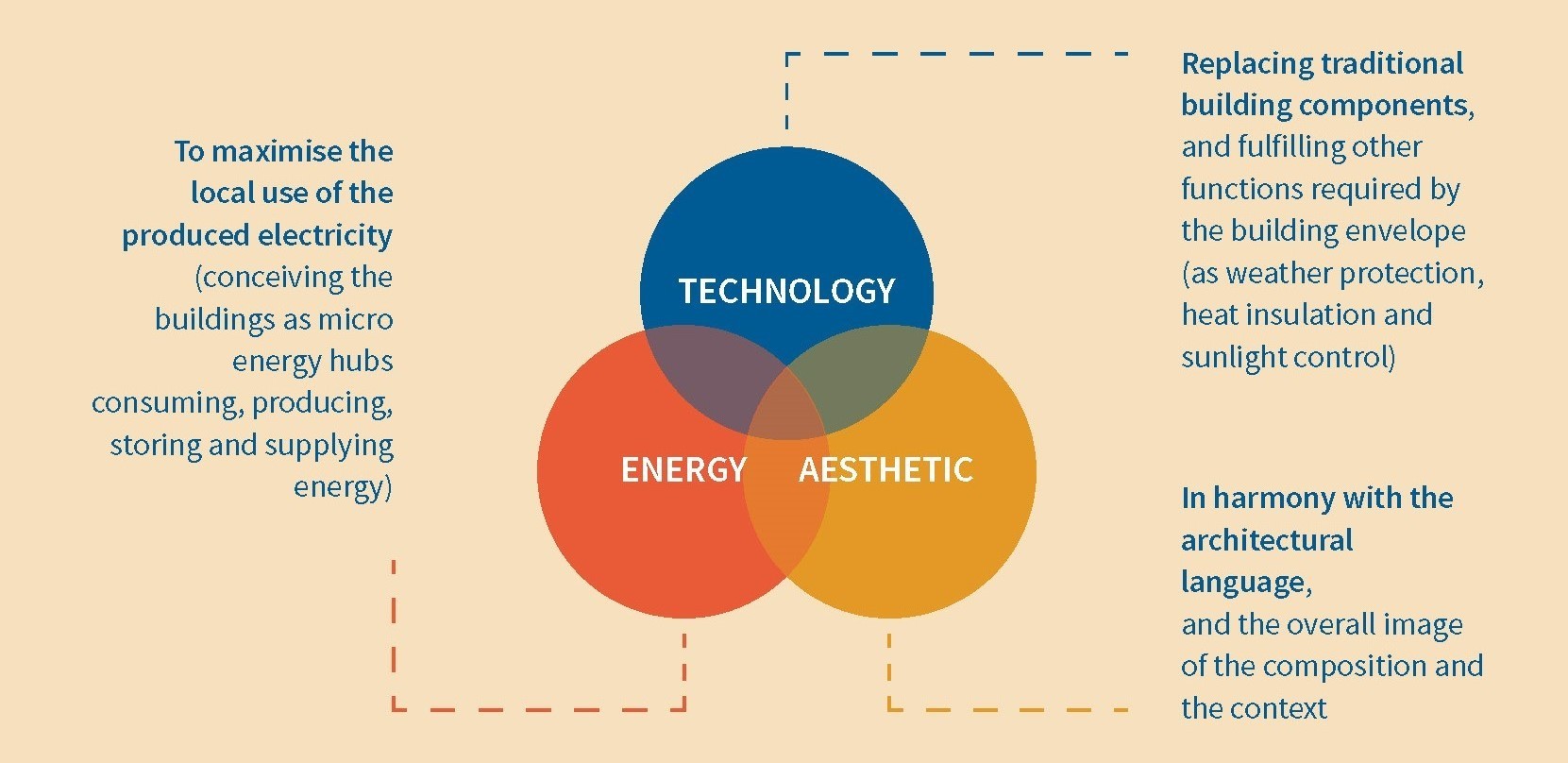Several rules for the technology integration are already identified at international level. PV modules should effectively play the role of traditional building components, e.g. provide protection from weather and noise, or heat insulation, security, daylight control, and so on. It should guarantee the constructive functionality. The aesthetic integration is also commonly discussed, as it is a critical point, often considered as an obstacle for the IPV dissemination. In order to reach an architecturally pleasing composition, the PV modules should be in harmony with the total image of the building according colour, texture, size, position. The energy integration is something essential to investigate as it refers to the PV interaction with the building and district energy system in order to maximize the local use of the produced electricity. Energy provided by PV should be effectively managed within buildings and districts. In our opinion, the energy integration will become more and more important to cope with new ways to conceive the building, not as simple consumer anymore, but as a micro energy hub consuming, producing, storing and supplying energy into a bigger energy system.
On the IPV platform we adopt an overall perspective on these three aspects. There are interactive links between the several kinds of products (modules, mounting systems, energy systems) and the case studies. Within the case studies, different levels of technology, aesthetic and energy integration are described. A wide variety of IPV configurations is defined by PV material, colour, size, mounting structure, architectural integration, connection with the buildings’ energy system. The case studies represent both private and public sector, giving an overview of different approaches to the IPV matter. A description of each case study together with pictures and data is provided in order to evaluate the IPV projects from different points of view.


